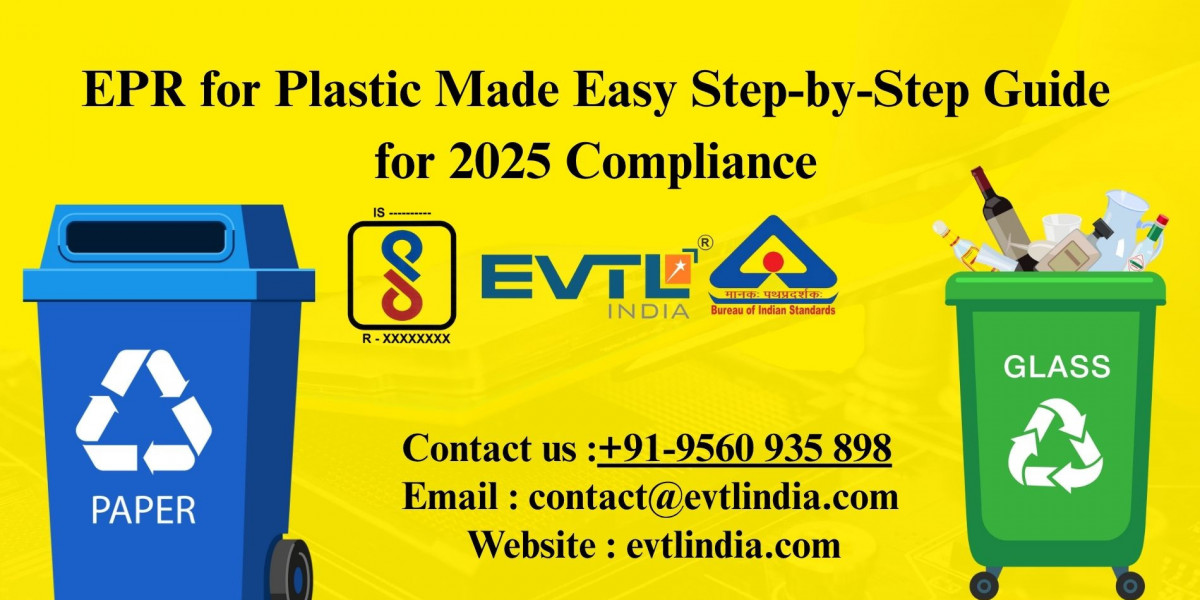Extended Producer Responsibility (EPR for Plastic) has rapidly grown from a regulatory concept into a powerful force shaping the circular economy in 2025. With governments worldwide tightening regulations and industries scrambling to keep pace, EPR for Plastic has emerged as the main mechanism pushing producers to take responsibility for the full lifecycle of their packaging. In India, the rules have been significantly overhauled in 2025 to ensure a more robust, enforceable, and technology-driven system.
1. Reinforcing the Circular Economy
At its core, EPR for Plastic shifts waste management costs from taxpayers to the brands that create packaging. By internalizing the environmental cost of end-of-life collection, recycling, and treatment, producers are now financially incentivized to design better, recyclable packaging. The OECD defines EPR as a policy designed to make manufacturers responsible for recycling and disposal, driving product recovery and environmentally sound product design.
In 2025, this has translated into clear circular economy benefits:
Design for recyclability: Producers are opting for mono-material solutions and eliminating hard-to-recycle composite packaging.
Use of recycled content: Many companies are committing to minimum recycled plastic usage to meet cost-effective EPR targets.
Development of reverse logistics: The adoption of QR-coded packaging linked to collection centers helps track return data and ensures accountability.
2. EPR Registration for Plastic: The Foundation of Compliance
Producers, importers, and brand owners (PIBOs) must complete EPR Registration for Plastic, which includes providing detailed data on plastic usage, recycling strategies, and compliance plans . The process is multi-staged:
Register with CPCB/SPCB portals – depending on state-level operations or pan-India presence.
Develop an EPR action plan that includes collection, recycling partnerships, and reverse logistics.
Submit required documents, including PAN, GST, import/export codes, and legal agreements with waste processors,
Pay the government fee – Plastic EPR Government Fee—determined by annual plastic tonnage: ₹10,000 (≤1,000 TPA), ₹20,000 (1–10,000 TPA), ₹50,000 (>10,000 TPA)
Receive EPR certificate (typically valid one year, renewable for three)
Submit quarterly compliance reports and annual returns confirming achievement of collection and recycling targets.
Pay Environmental Compensation (EC) for non-compliance—₹17,500 plus ₹5,000/tonne shortfall, with potential refunds of 75%, 60%, or 40% depending on remedy timelines
This structured process ensures that every player in the plastic supply chain is onboard, measurable, and accountable.
3. Smart Monitoring and High Targets in 2025
The 2025 EPR rules significantly raised targets and tightened reporting standards:
Recycling targets now range between 30–50% for flexible and 50–80% for rigid plastics, scaling upward annually.
Mandatory digital tracking, QR codes and real-time data integration via a unified EPR portal to ensure transparency and traceability.
Quarterly compliance reports instead of annual ones, with fines ranging from ₹10,000 to ₹50,000 per late submission.
Random audits by Pollution Control Boards, backed by penalties, certificate suspension, or blacklisting for repeat offenders.
These innovations make EPR for Plastic more than a desk exercise—it’s an operational imperative.
4. Demand for Specialists: EPR Consultant & Plastic Waste Consultant
Given the complexity of 2025’s EPR regime, many companies—especially SMEs—seek expertise from EPR Consultants or Plastic waste consultants. Their role includes:
Guiding on EPR Registration for Plastic.
Designing compliant action plans and logistics networks.
Securing partnerships with certified Plastic EPR Return Consultant and PROs.
Ensuring digital track-and-trace system integration.
Managing government liaison, audits, and Plastic EPR Government Fee structures.
Arranging Environmental Compensation payments or refunds when needed.
The demand for high-caliber consultants has skyrocketed—clients want a "Number 1 consultant in EPR" to ensure seamless compliance, zero penalties, and minimal disruption.
5. Environmental Compensation & Refunds
Under 2025’s updates, PIBOs that miss targets incur Environmental Compensation, but timely rectification allows staged refunds (75%, 60%, or 40%) Though clarity on refund procedures remains murky, robust consultancy, and compliance systems now include budgeting for EC buffers and tracking remediation deadlines for refunds.
6. Market Dynamics & Economic Drivers
EPR for Plastic now shapes both supply and demand:
Recyclers and PROs benefit from increased volumes and stringent certification standards.
Reverse logistics startups offering pickup-and-credit services flourish in urban areas.
Carbon-footprint-conscious consumers reward brands committed to recycled content, creating incentive beyond fines.
Green investors and ESG funds favor companies led by strong EPR compliance and circularity metrics.
India’s Recykal success story shows how technology-led EPR solutions can scale: from 30,000 MT processed in 2018 to over 200,000 MT by 2021, earning global recognition
7. Circular Products & Innovation
With EPR for Plastic, product design is evolving:
Mono-material pouches replace laminated packaging.
Reusable containers gain traction in FMCG and retail.
Deposit Refund Systems (DRS) managed through QR codes and digital wallets are taking off, as seen in Uttarakhand’s pilot.
Manufacturers redesign packaging for easier collection and recycling.
This is the true “circular economy”—designing products that anticipate reuse and reduce waste.
8. Challenges and Consultancy Workload
Even so, EPR for Plastic in 2025 brings challenges:
Defining shared responsibility among brands and PROs.
Tracking informal waste collectors and ensuring payment transparency.
Data integrity on tracking platforms—mandatory for compliance.
Policy clarity on EC refunds and audit expectations.
Worker training at collection and sorting agencies.
These pain points feed the consultancy boom: businesses need experienced Plastic waste consultants and a reliable Plastic EPR Return Consultant to navigate.
9. Why the “Number 1 Consultant in EPR” Is in Demand
With high stakes and complex regulations, every producer needs top-tier guidance. A Number 1 consultant in EPR offers:
Accurate assessment of plastic tonnage and fee structures.
End-to-end registration management and document filing.
Liaison with CPCB and SPCBs.
Eco‑friendly solution integration reducing long‑term costs.
Automated reporting and portal integration.
Strategies to avoid penalties and maximize EC refunds.
10. Future Outlook
By driving financial accountability, design-for-environment, and digital monitoring, EPR for Plastic is catalyzing a sustainable and circular economy in 2025. Government regulations, technological frameworks, and market demand converge around the concept—with and Plastic waste consultants acting as the bridge between policy and production. For brands, partnering with a leading Plastic EPR Return Consultant—especially one recognized as the "Number 1 consultant in EPR"—offers peace of mind, regulatory certainty, and environmental leadership.
Conclusion
In summary, EPR Registration Consultant in 2025 has become the backbone of the circular economy. Through strict EPR Registration for Plastic, transparent digital tracking, and robust compliance facilitated by expert EPR Consultants and Plastic waste consultants, plastic packaging is being reimagined as a reusable, reclaimable resource—not just disposable trash. The emergence of Number 1 consultant in EPR firms reflects the urgency and complexity of this transformation. With innovation, accountability, and enforcement aligned, India—and the world—is charting a course toward a cleaner, more circular future.
Faqs
1. What is EPR for plastic, and how does it support the circular economy?
EPR (Extended Producer Responsibility) for plastic mandates that producers take responsibility for the entire lifecycle of plastic products, promoting recycling, reuse, and sustainable waste management—key pillars of the circular economy.
2. Why is EPR implementation critical in 2025 for plastic waste reduction?
In 2025, stricter compliance norms and rising plastic pollution have made EPR essential. It ensures producers actively reduce waste, support recycling infrastructure, and minimize environmental impact.
3. How are businesses adapting to EPR norms in India?
Many businesses are partnering with PROs (Producer Responsibility Organizations), investing in recyclable packaging, and aligning with government targets to meet their EPR obligations efficiently.
4. What role do consumers play in EPR for plastics?
Consumers support EPR by segregating waste, choosing eco-labeled products, and participating in return or deposit systems, which help close the loop in plastic usage.
5. How does EPR regulation contribute to a sustainable and profitable business model?
By adopting EPR, companies gain brand trust, reduce raw material costs through recycled inputs, and stay compliant—driving both environmental and economic sustainability.








